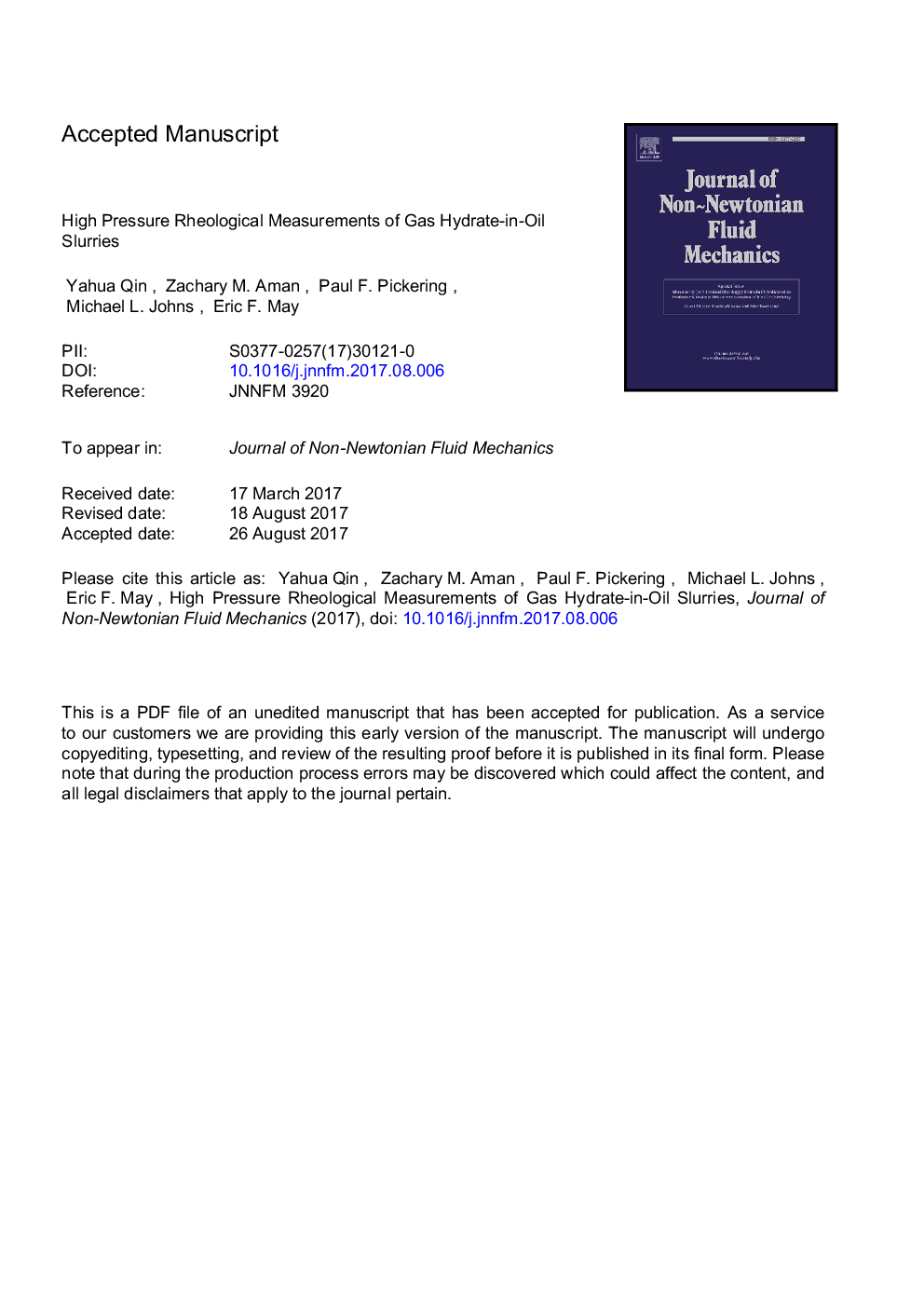| Article ID | Journal | Published Year | Pages | File Type |
|---|---|---|---|---|
| 4995529 | Journal of Non-Newtonian Fluid Mechanics | 2017 | 24 Pages |
Abstract
Gas hydrates are ice-like solids that may form in crude oil flowlines under high pressure and at low temperature, resulting in the formation of viscous hydrate-laden oil slurries. The magnitude of the slurry viscosity has been suggested as a primary means of determining the risk and severity of flow blockage, but there is a dearth of data available to calibrate predictive models of hydrate-in-oil slurry viscosity. This work deploys a controlled-stress, high-pressure rheometer to characterize the rheological properties of methane hydrate-in-crude oil slurries, which were generated in situ from water-in-oil emulsions. A vane blade rotor was found to maintain sufficient methane saturation in the oil phase during the hydrate growth period to allow near full conversion of the water. Dynamic measurements with the rheometer were able to separate the contributions to the viscosity change as the emulsion converted to a hydrate slurry due to (i) formation of the solid particles and (ii) reduction of the methane content in the oil continuous phase. For 5-30 vol% watercut systems, the slurry viscosity increased between 20 and 60 times during hydrate growth, whereas, under equivalent conditions for a 20% watercut emulsion, the viscosity increase due to the desaturation of methane from the oil phase was less than a factor of two. The steady-state hydrate-in-oil slurry demonstrated shear thinning behavior at both 1 and 5° C. The measured slurry relative viscosity deviated between 12 and 212% from the current industry-standard hydrate-in-oil slurry viscosity model, indicating the need for model improvement. After an eight-hour annealing period to simulate subsea shut-in, the yield stress of the hydrate-in-oil slurries varied between 3 and 25â¯Pa over 5 to 25 vol% hydrate.
Related Topics
Physical Sciences and Engineering
Chemical Engineering
Fluid Flow and Transfer Processes
Authors
Yahua Qin, Zachary M. Aman, Paul F. Pickering, Michael L. Johns, Eric F. May,
